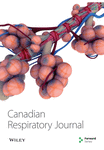Management of Recurrent Lung Infections in a Case of Hyperimmunoglobulinemia E (or Job’s) Syndrome
Abstract
The diagnosis of hyperimmunoglobulinemia E (hyper IgE) or Job’s syndrome was made in a five-month-old girl with chronic staphylococcal mastitis, elevated serum IgE and abnormal neutrophil chemotaxis. After multiple hospitalizations for severe skin in functions, right upper lobe bullae were found and treated by lobectomy when the patient was three years of age. Thereafter, the patient was repeatedly hospitalized for pneumonia while on cloxacillin prophylaxis and receiving regular chest physiotherapy. When she was 12 years old, pulmonary deterioration (increased frequency of pulmonary infections, hemoptysis, radiological destruction or the right middle lobe) led 10 a right middle lobectomy. Since this intervention, the patient has had an improved quality nf life, takes part in regular sports activities, without recurrence of severe pulmonary infections, and has had near normal pulmonary function studies. A concerted medicosurgical therapeutic regimen can control severe pulmonary complications in patients with this rare syndrome.




